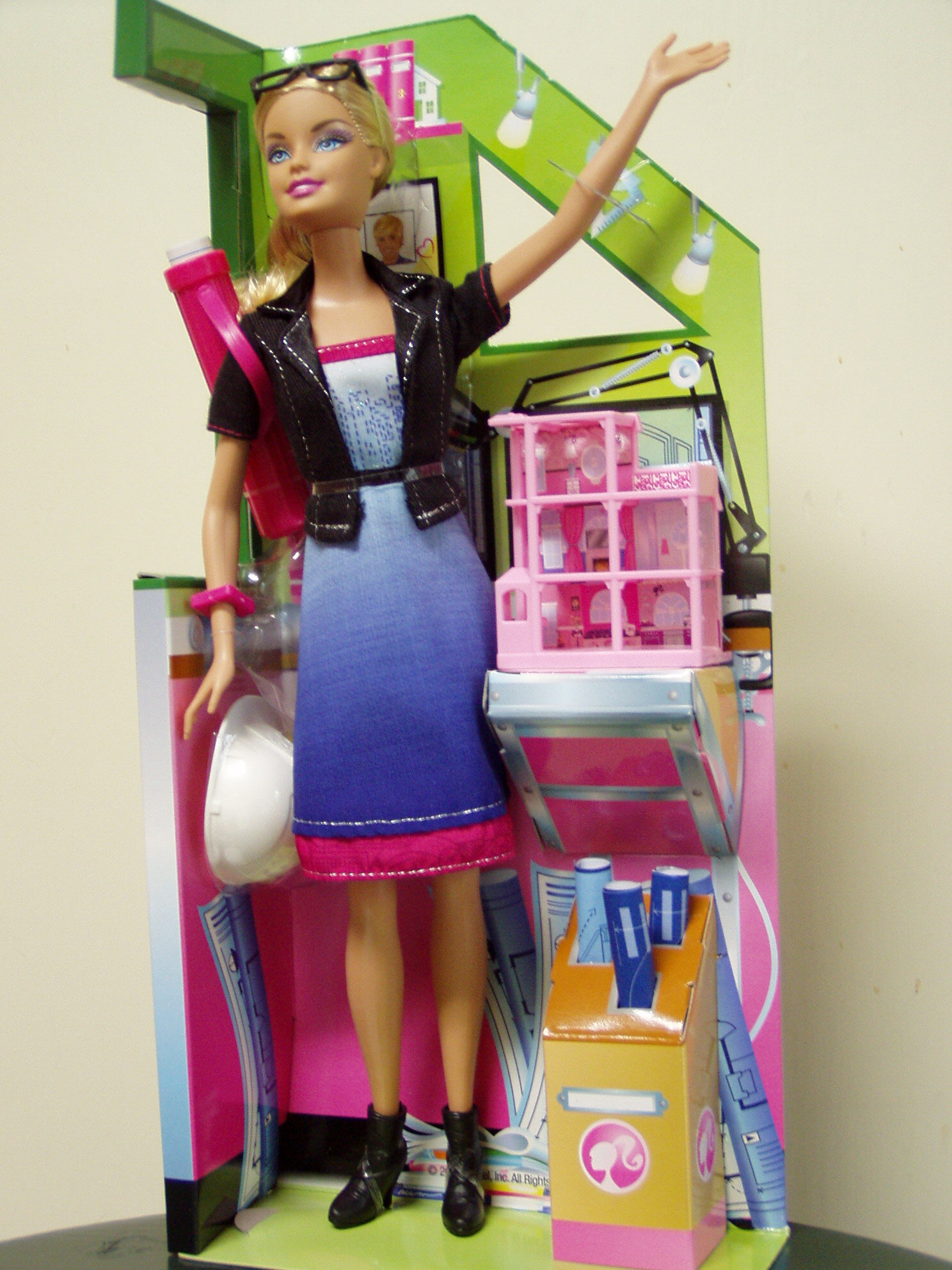Architect Barbie: Role Model or Ridiculous?
/I met with a group of women architects for lunch last month and the topic was Architect Barbie which debuted at the 2011 American Institute of Architects (AIA) national convention.
In conjunction with the debut, Mattel spotlighted architecture as the “Career of the Year” for Barbie who now has over 125 careers in her resume.
At first glance, any kind of Barbie seems farfetched as a role model for female architects: we’re not fashionistas, we don’t wear skirts to construction sites, pink isn’t a favorite color, and makeup tends to be scarce. We were happy, however, to see that she came with a hard hat for safety. This is probably because Mattel consulted with an architect to keep the doll “authentic to the career.” According to Mattel, her outfit is “symmetrically stylish with bold colors and clean lines.”
A few minutes into the discussion, we acknowledged that there were really very few role models for young women wanting to be architects. Many of us confessed to Lincoln Log collections, but agreed that logs weren’t usually on holiday lists. A few more minutes of discussion and we thought maybe Architect Barbie wasn’t such a useless toy. After all, she’s joining Doctor Barbie, Astronaut Barbie, and even President Barbie, among others -- pretty exalted company.
Mattel also cosponsored The Barbie Dream House Competition which was won by two Harvard graduate students with a house featuring solar panels, operable shades, bamboo, and low-flow toilets. The Huffington Post reported the house could save 4,000 gallons of water a year even though it would cost $3.5 million to build (this seems about right for Barbie & Ken!). As a result of the competition, Mother Nature Network donated funding to the Charter High School for Architecture & Design in Philadelphia.
In the AIA Press Release, Professor Despina Stratigakos (a noted architectural historian who has written extensively on the history of women in architecture), hoped that Architect Barbie encourages young girls to imagine a better world that they can design and build.
The coming out of Architect Barbie, in fact, occurred on the 125th anniversary of women in architecture. The first woman was admitted to the Western Association of Architects (precursor to the AIA) in 1885. Even AIA President Clark Manus, FAIA, is quoted as saying, “It’s great that Mattel is recognizing the importance and emergence of women in our field.”
Maybe this Mattel thing isn’t so bad: an eco house, financial benefits, and career encouragement for an unusual womens’ profession.
However, as our lunch was consumed, some ladies noted that as of last year, 17% of AIA members were women. This is about what it was when I graduated from architecture school 25 years ago. And considering that about 30% of architecture graduates and 50% of our population are females, the gender gap in the practicing profession seems quite high.
So we chatted some more and wondered if there was a problem with discrimination, creativity, or competition in our field? The younger women didn’t feel discrimination at all, and the consensus seemed to be that the architectural profession was different from other professions. That is, it’s poorly paid for the amount of education required. Consequently, retention and mentorship is difficult for architects in general, but maybe even more so for women architects. For example, new licensing requirements for NCARB require that apprenticeship be completed within five years instead of ten. If a woman wants to take a year or two off to have children, she might be hard-pressed to satisfy this requirement. And, of course, maternity leave is rarely available.
As lunch wound down, we concluded that if Architect Barbie had appeared forty years ago, she might have been revolutionary. To us, today, her appearance only seems to indicate the status quo: women are, in fact, equal and competent architects; there just aren’t so many of us for practical or esoteric reasons. So maybe Architect Barbie isn’t sublime, but she’s not ridiculous either.
As Michelle Chidoni, Mattel spokesperson, states, “For more than 50 years, Barbie has served as a reflection of fashion, culture, and aspiration to girls of all ages. Role playing with Barbie leads to real-life opportunities.”
OK, maybe. But Career of the Year? In this economy? Only Mattel could have such dreams . . . and maybe I should give back the Tonka trucks that I traded for the Barbies I never wanted?






